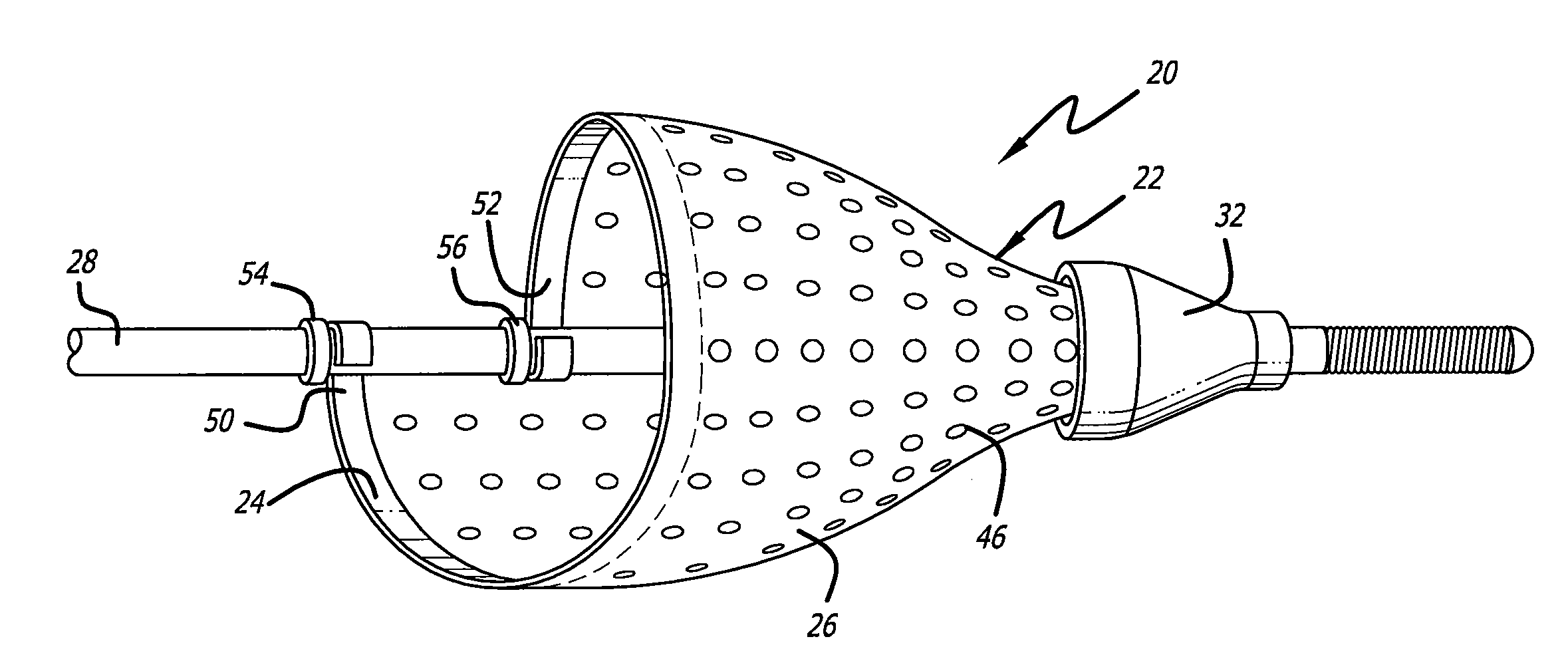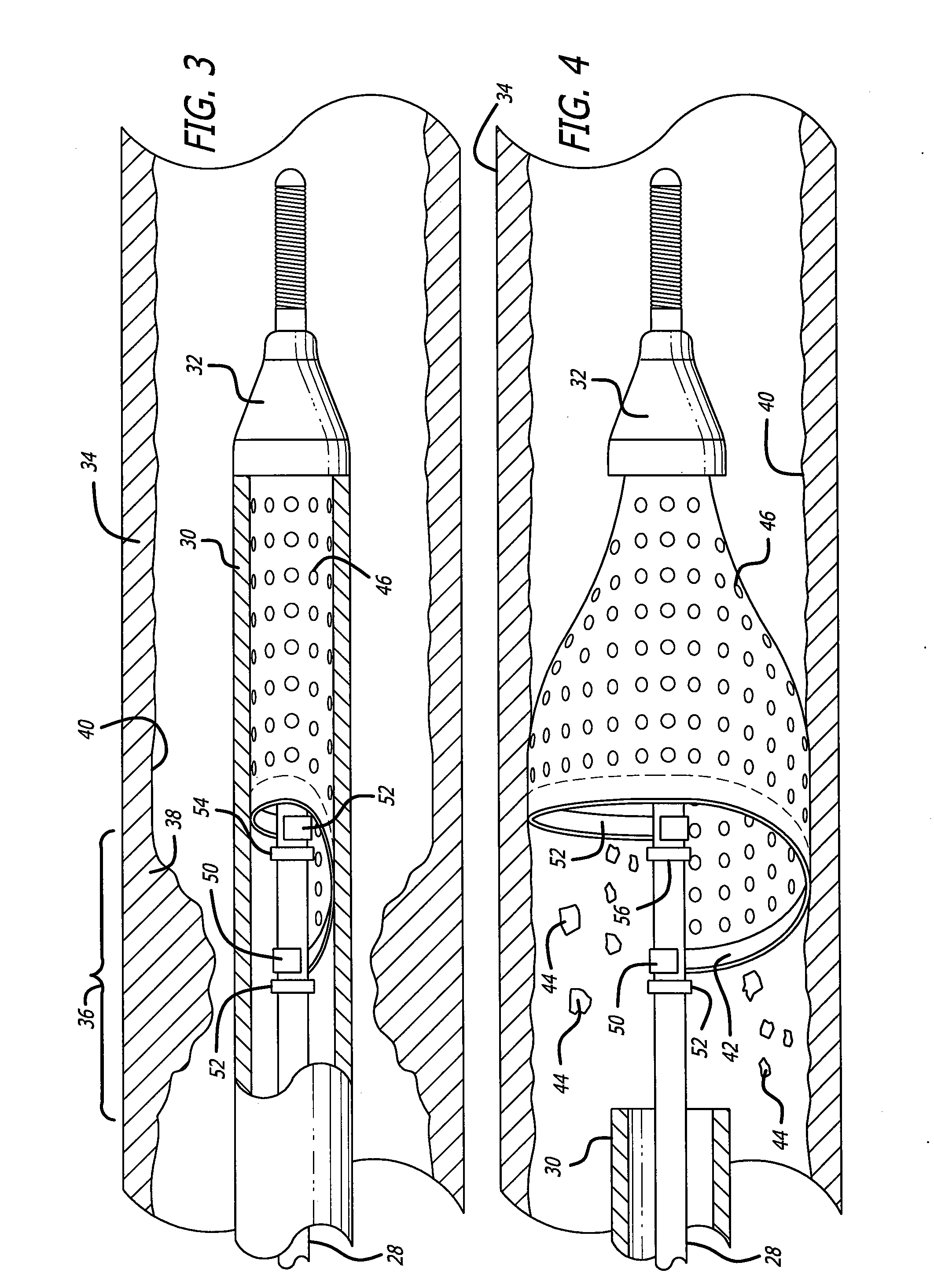Single-wire expandable cages for embolic filtering devices
a filter device and expandable cage technology, applied in the field of single-wire expandable cages for embolic filtering devices, can solve the problems of affecting the patient's health, affecting the patient's treatment, so as to achieve convenient deployment, good flexibility, and sufficient strength
- Summary
- Abstract
- Description
- Claims
- Application Information
AI Technical Summary
Benefits of technology
Problems solved by technology
Method used
Image
Examples
Embodiment Construction
[0034] Turning now to the drawings, in which like reference numerals represent like or corresponding elements in the drawings, FIGS. 1 and 2 illustrate one particular embodiment of an embolic filtering device 20 incorporating features of the present invention. This embolic filtering device 20 is designed to capture embolic debris which may be created and released into a body vessel during an interventional procedure. The embolic filtering device 20 includes an expandable filter assembly 22 having a self-expanding, single-wire cage 24 and a filter element 26 attached thereto. In this particular embodiment, the expandable filter assembly 22 is rotatably mounted on the distal end of an elongated (solid or hollow) cylindrical tubular shaft, such as a guide wire 28. The expandable filter assembly also could be attached directly onto the guide wire, so as not to rotate independently of the guide wire. The guide wire has a proximal end (not shown) which extends outside the patient and is m...
PUM
 Login to View More
Login to View More Abstract
Description
Claims
Application Information
 Login to View More
Login to View More - R&D
- Intellectual Property
- Life Sciences
- Materials
- Tech Scout
- Unparalleled Data Quality
- Higher Quality Content
- 60% Fewer Hallucinations
Browse by: Latest US Patents, China's latest patents, Technical Efficacy Thesaurus, Application Domain, Technology Topic, Popular Technical Reports.
© 2025 PatSnap. All rights reserved.Legal|Privacy policy|Modern Slavery Act Transparency Statement|Sitemap|About US| Contact US: help@patsnap.com



